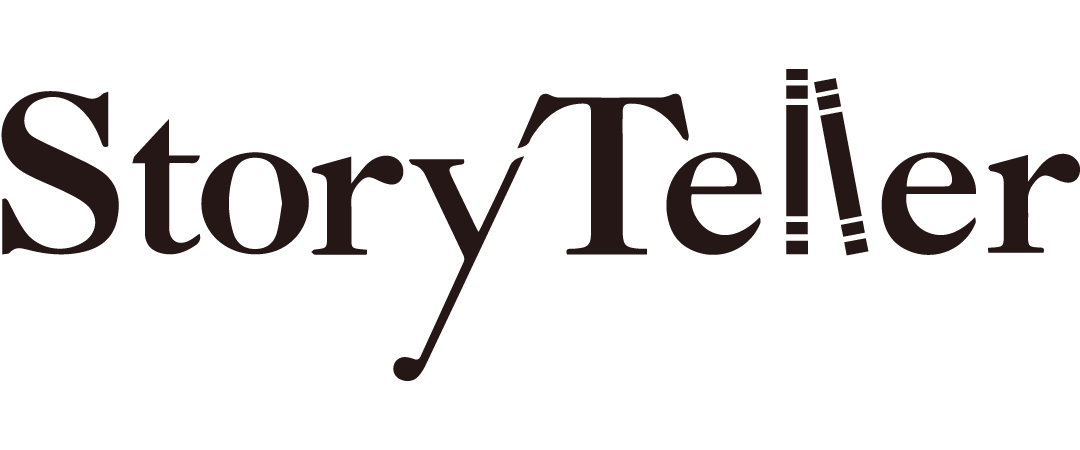01「阿仔,你乖乖地留在家吧,阿媽要上班了。」
雙親都要外出工作,而把兒女交給親戚照顧甚至獨留家中,是無數香港人的生活寫照,在這個艱難的社會,早就再難有家庭主婦/主夫的存在。他的母親也是一樣,小時候,他媽媽幾乎每天都因為工作而要將他獨留在家,但那天和尋常的一天不同的是,他媽媽在臨走前畫了一隻大象給他。
他的媽媽在工廠工作,不是特別精通繪畫,她畫的也不是特別漂亮的大象,但這次經歷讓他首次發現,原來用紙和筆就可以畫出任何東西⋯⋯
那一年,他四歲,那是震憾,也是啟蒙。他因為沒有娛樂才開始畫畫,卻讓他發現畫畫是比任何玩具都還要好玩的玩意。自那天起,他不斷畫各種圖形:圓形、長方形或平行四邊形,愈畫愈複雜,後來,他和其他小朋友一起玩時,會將畫紙連在一起,合力畫一個很大的城市⋯⋯
「當媽媽知道我想繼續學繪畫時,她簡直晴天霹靂。我便說:『是妳令我迷上畫畫的』。」
他是 Jan Curious 阿水,正處於休息狀態的樂隊觸執毛 Chochukmo 的主音,早前組了樂隊 R.O.O.T,以及與 Bass 手阿輝組成電子音樂組合 Jan Curious & tombeats.,同時,也是一位獨立插畫師。
01「“When I was studying design, my tutor and I used to talk about what does art mean. Imagine how odd it’d be to have five unopened water bottles laid out in front of you, and one of them stands out without a wrapping, or it’s been emptied out.
“The sense of eccentricity it presents is what we call art.”
When a pattern is formed but unexpectedly disrupted, it creates a touch of “outstanding” eccentricity, and that’s what defines art.
Jan Curious, whose music is recognisable to a lot of local people, is a man of many roles – the lead singer of rock band Chochukmo, the founder of R.O.O.T, co-founder of Jan Curious & tombeats, an electric duo he formed with bass player Ah Fai, and also a professional indie illustrator.
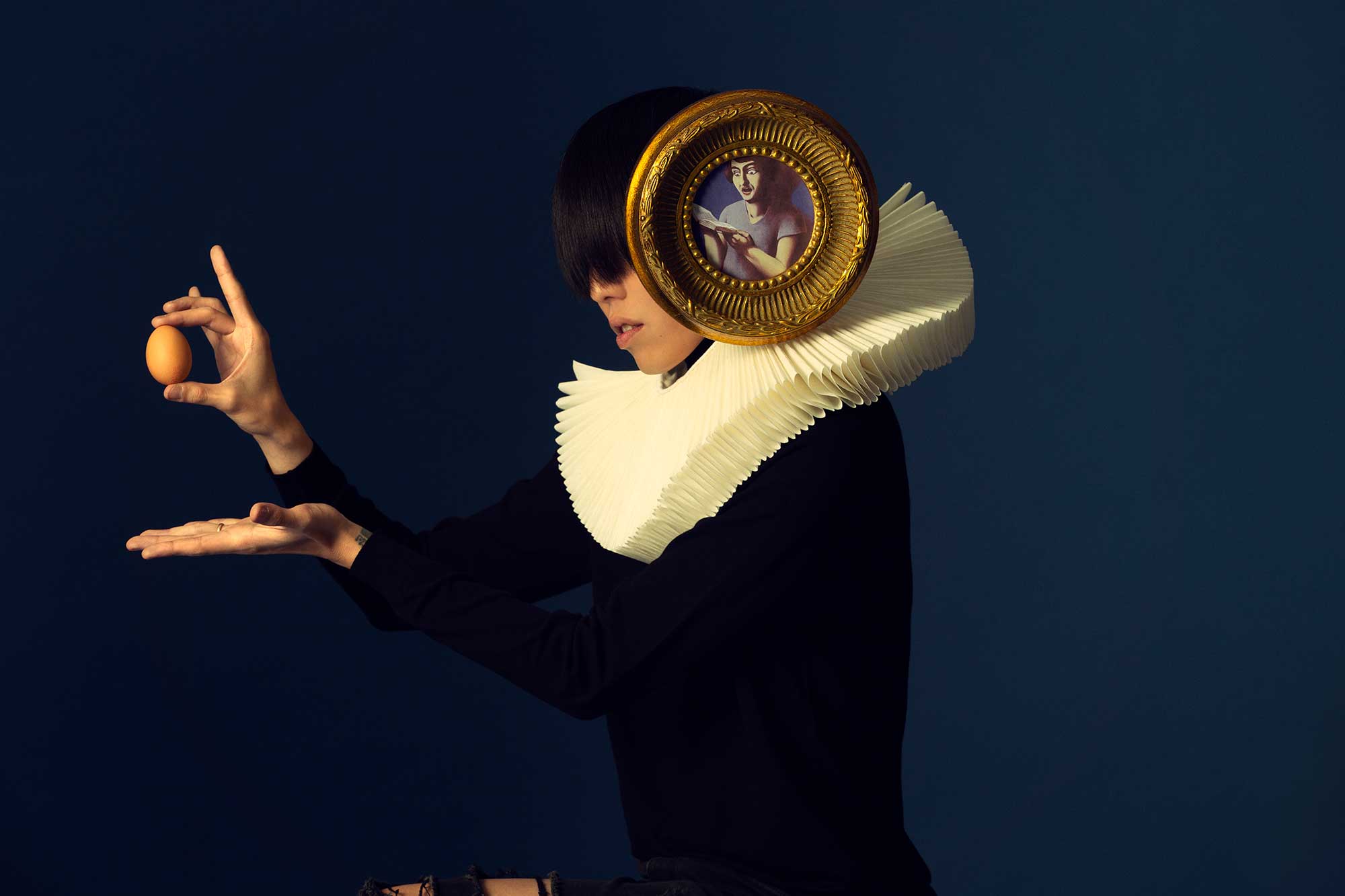
02喜歡畫怪獸的人
阿水自言,自己最近主要都在畫怪獸。
他一直相信,創意不是天生,而是靠後天努力練習訓練出來的,只要日常多思考,「腦中倉庫」夠大,要用時自然有材料。他曾經做過一個練習,規限自己不可以重複地,去畫男人各種不同的鬍鬚,畫到想不到新畫法為止。畫到最後,阿水發現就算連鬍鬚都用來紥辮,畫人物始終有盡頭,「但畫怪獸可以無止盡。」於是阿水開始畫怪獸。
阿水畫怪獸時,有不少靈感來自電影或卡通片,例如《海賊王》和《全職獵人》,那些動漫當中有很多特別的人物,「有角色的手有三節關節,故事中有魚人又有人魚。不知道怎樣想出來。」阿水也看很多紀錄片,例如《Blue Planet》,從大自然的不同動物中尋找靈感。
「有時我們會話說別人『白鴿眼』,我覺得這種說法好有趣,於是就畫了一個長了白鴿眼的怪獸。又有人會說:『隻眼生喺鼻上面』或『大細超』,於是我又如實畫出來。」阿水說,他畫怪獸時,想盡量畫得幽默一點,即使是令人憤怒的東西,也要畫得好笑才行。
02Monster maker
The artist has been all about monster lately.
Jan believes being creative is hard work, and keeping his brain sharp with mental workouts prepares him for challenges.
With this in mind, Jan once tasked himself to draw facial hair in different styles without repeating. He tried everything, even having them braided, but it turned out variation in facial hair is somehow limited, “whilst drawing monsters isn’t,” he says. This was when he started building his characters around monster creatures.
He draws inspiration from movies or manga, including “One Piece” and “Hunter × Hunter”, which feature outstanding characters with prominent traits.
“Some of them have three joints; some of them are fish-turned humans and some mermaids,” says Jan. “It’s mesmerising, creativity-wise.”
Wild animals featured in nature documentary, such as “The Blue Planet”, also informed his drawings.
“I once created a monster character that has pigeon eyes in order to portray a Cantonese phrase ‘eye of white pigeon’, which describes people who are snobbish.
“Other slangs such as ‘your eyes are on your nose’ and ‘daai sai ciu’ (a term that refers to something unjust) have also been translated into my characters,” he adds.
Jan directs his work with humour, turning even agitating subjects into something amusing.








/
我經常覺得,音樂和插畫都是一種讓自己更認識自己的工具
Music and illustration are means for me to better understand myself.
/
阿水相信,我們可以從創作中看到自己的性格,「可能有一個人認為自己很簡樸,但只要看看他的畫就可以知道了,如果他畫的畫畫很複雜,那麼他其實就是一個不簡樸的人。」
A piece of art, he believes, is a window into the artist’s personality. “For example, someone who considers himself as frugal may not be as frugal as he believes himself to be, if his drawing is too cluttered.”
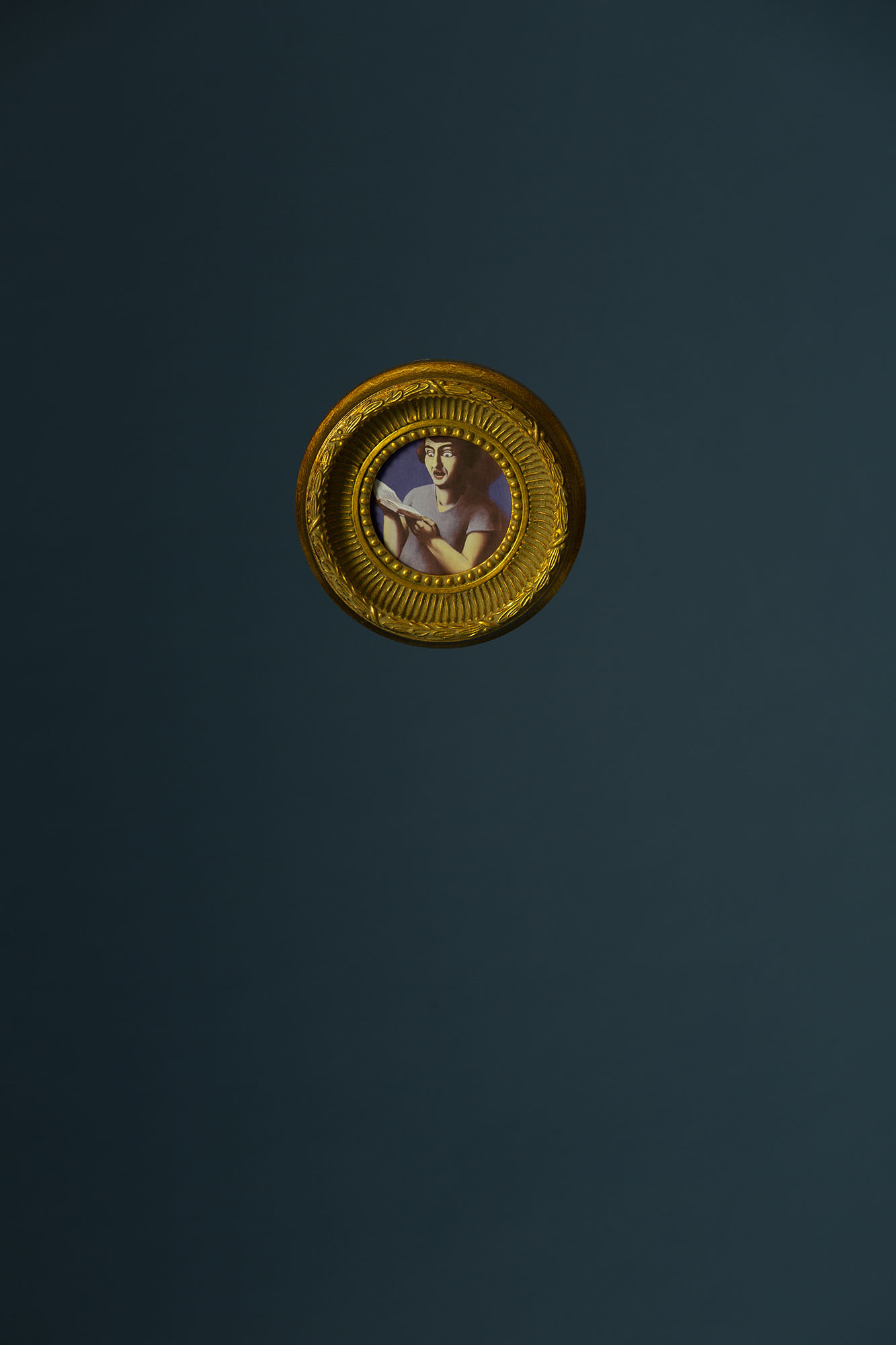
03無欲則剛:由複雜到去蕪存菁
「以前畫畫追求複雜,畫一幅 A3 Size 的畫,就想畫滿細節,足夠讓你看足半天。」
阿水以前的作品,往往會畫上很多人物或圖案,成為一幅好像《Finding Wally》 那麼密集的作品。
他提到,自己最初畫畫只用 Marker,後來覺得 Marker 不夠細緻,便改用 0.5 水筆,再後來覺得要用 0.1 水筆才行,「不斷追求 Detail,甚至去到一個抑鬱的地步。」後來阿水反問自己,是不是因為沒有安全感,才想要填滿整個畫面?這才發現,畫畫不是要靠數量取勝,因為追求 Detail 永遠都不夠,反而「無欲則剛」才是最高境界。
「海納百川,有容乃大 ;壁立千仞,無欲則剛。」那是林則徐為勉勵自己而寫的一句說話,沒有欲望的人,才能無所畏懼、剛直不阿。阿水覺得,那是人最高的精神狀態。
阿水自言,自己以前很討厭抽象藝術,覺得那種畫一兩筆就算的畫作,不算是藝術,但不知不覺自己就變為了一個只看重 Craftsmanship 的人,有時執著技巧卻忽略了作品的訊息。
「留白才能給人空間思考,」阿水笑道。「我會自問為甚麼自己做不到文青。」
去蕪存菁。阿水想戒掉複雜,他開始嘗試只用單色和簡單線條來畫畫,甚至連 Texture 也不加。阿水說,連自己的音樂也變得簡單起來。以前喜歡飆高音,想歌曲每五秒就有一個特別的變化,現在開始欣賞簡單的曲風,希望只用一個音符便能表達他的想法。
「人有陰陽兩極,兩邊都要試過,才能找到一個適合自己的位置。自己人生之前的十至二十年都複雜、浮跨過了。現在就試試簡單。無論音樂、畫畫,甚至穿衣都是。」
03Less is more: from complexity to simplicity
“My old drawings were very much driven by complexity,” Jan recounts. “I tended to fit as much details as possible on a A3-size canvas.”
Most of his is early works are crowded with throngs of characters and patterns that call to mind the famous “Where’s Wally” illustration.
To create complex brush strokes, Jan gave up paint marker in favour of thin-tipped pen with a 0.5 mm needle, and at the end 0.1 mm needle.
“I was in too deep with details and I was depressed because of it.”
Was it a sign of insecurity? He wondered. It took him a while to realise his never-ending pursuit of details does not equal quality; the secret to better work isn't drawing more, it’s drawing less.
As one of the notes by Lin Zexu (a Chinese official dating back from the Qing dynasty) goes – be tolerant to diversity; the less you desire, the stronger you are.
Living without desire makes you become fearless and thus more forthcoming. This, he trusts, is the highest state of mind.
As an artist, Jan used to loath abstract paintings because he believed a couple of brushstrokes on canvas should not be considered as a form of art. Without even realising, he ended up prioritising craftsmanship over the message he wished to convey in his work.
“Voids in an artwork allow viewers more space to think. I wondered why I failed to be an art buff,” he jokes.
Less is more. Today, Jan strives to maintain a clean and monochromatic scheme for his drawings that devoid of complex brushstroke, even texture.
This approach extends to his music – from high-pitched tones and volatile melodies to a neat melodic style that, he hopes, can deliver his thoughts with one single note.
“There are Yin and Yang in our body. We’ve got to try both sides to be able to identify which one works better for us,” says the artist.
“The first 20 years of my life were complicated and buoyant. Now I’m trying to keep things simple, in terms of music, illustration or even the way I dress.”
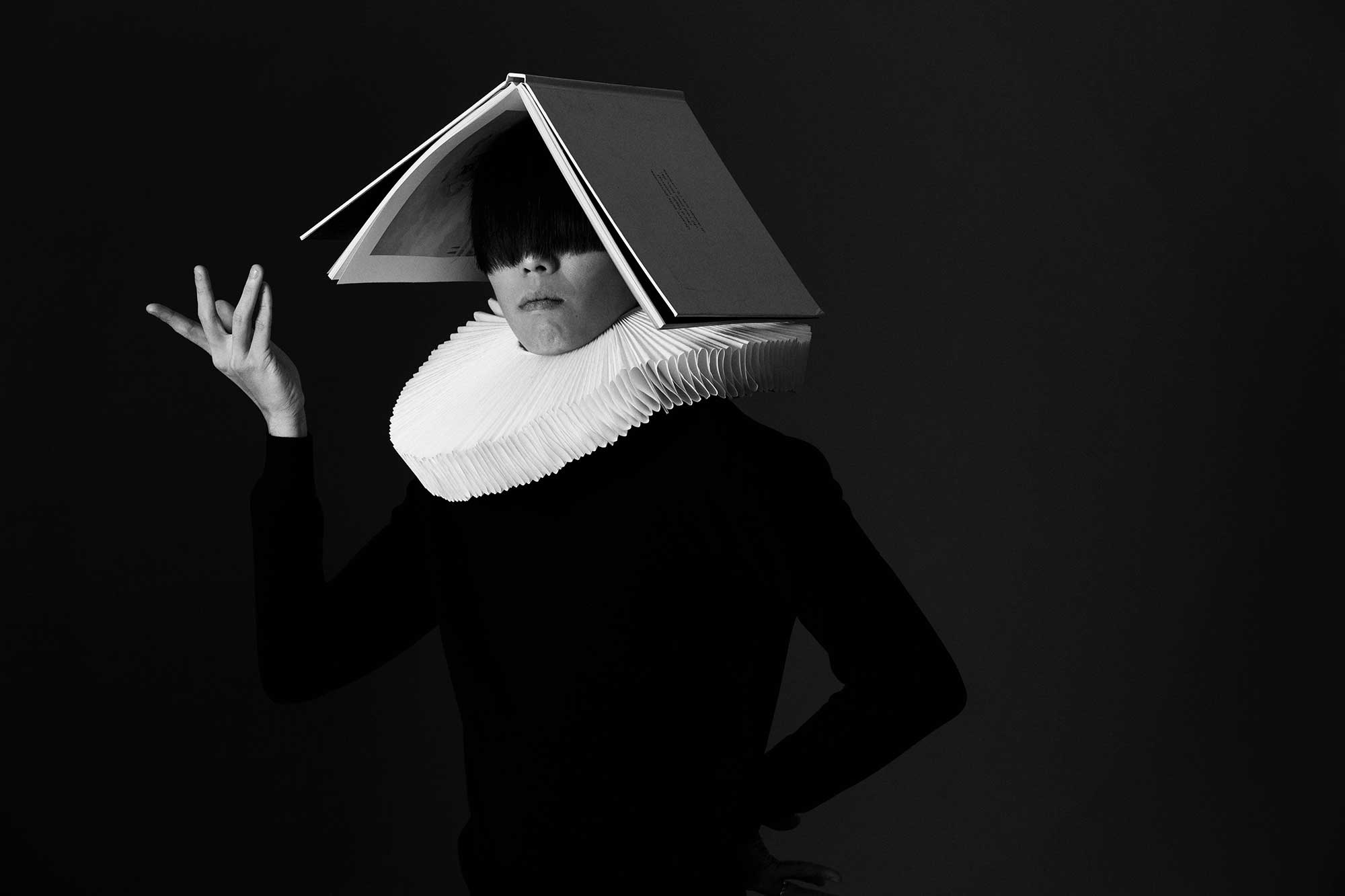
04資本主義讓音樂和繪畫變質
我們的其中一條問題是:「你人生中最重要的一張紙是甚麼?」
「這問題很難答⋯⋯」
阿水實在想不到有甚麼紙是不能被取代的,因為現在所有東西都已經電子化,「甚麼都可以再印出來啊。」除非是一張很有歷史的紙張,才不能隨便複製,但阿水又不擁有這類貴重的東西。
「只能答是結婚證書吧。」阿水笑著回答。
記者有時訪問阿水時會問:「對你來說最重要的物件是甚麼?」可能記者期望他回答「結他」、「咪高峰」或是「畫筆」之類⋯⋯「但老實說,沒有甚麼東西是特別重要的。」
阿水坦言,觸執毛的其他成員也有類似想法,因為沒有甚麼東西是特別重要,所以沒有執著,也沒有強求,「樂隊不玩就不玩了,沒有所謂」⋯⋯就像阿水常說的「無欲則剛」,沒有過多的欲望,才能自由自在的生活、自由自在地畫畫、玩音樂。
04Capitalism corrodes music and painting
“What’s the most important piece of paper in your life?” we ask Jan and he replies:
“This is a tough question……”
Nothing is irreplaceable, he believes, as technology facilitates every aspect of our lives today.
“Everything can be printed out again if necessary.” Unless it’s a sheet of paper that contains historic values, which he doesn’t own any.
“So I’d say marriage certificate,” he says half-jokingly.
A frequent guest on media, Jan was once asked by a journalist: “what object is most important to you?”
The reporter was probably expecting something like a guitar, microphone or a drawing pen. But his answer was: “frankly, nothing is particularly important to me”.
The rest of Chochukmo members share similar thoughts, he acknowledges, and that’s why they try not to be too preoccupied with their own wishes.
“If our music band has come to a halt, then so be it,” he shrugs.
Just like his motto – less is more, he came to realise he can live his life and pursue art without restraint when he stopped wanting more.
05如果有一張機票,阿水想去的地方,是古巴。
「一直以來我們接受的教育都告訴我們,社會主義是應該會失敗的,但竟然還有一個國家正在如常運作,就很想去看看。」
「有時我會想,玩音樂和藝術本來是很簡單的事情,是不是因為有資本主義,所以大家夾 Band 和畫畫時,才會那麼追求成名?」
阿水說,看紀錄片或電影時,會看到古巴人開開心心玩音樂和跳舞的畫面。阿水開始想像古巴人的生活,會不會就是每天點枝雪茄,相約朋友傍晚在自己家門前彈彈結他,跳跳舞、玩玩音樂?「而不像我們會去看某某地方,看某某明星的 Show。」在一個沒有資本主義的世界,音樂和繪畫,可不可以是生活的一部份?
「一旦和資本主義掛勾,甚麼東西都會變質,」阿水說,「例如踩滑板和 Graffiti,明明塗鴉就是一件犯法的事,現在連名牌也要找人幫忙塗鴉。」一旦商業化,已經令 Graffiti 失去了它的原意,但現實地計算,又有很多 Artist 需要這類型的工作來幫補生活⋯⋯生活在高度資本主義社會,這正是我們無可避免的事情。
05High on the travel list – Cuba
“We’ve always been told that socialism doesn’t work; yet there’s a state governed by communist party, so I’m up for a visit.”
“The motivation for pursuing art is supposed to be very pure. Sometimes I wonder if it is capitalism that makes musicians and painters so eager to make a name.”
When he stumbled upon documentaries or movies that capture the way Cubans indulge themselves with music and dancing, he would picture them playing guitar, dancing to music whilst enjoying cigar in groups on doorsteps.
“Unlike them, we go to concerts.”
In a world without capitalism, can music and painting be part of our lives? He ponders.
“Capitalism corrodes almost everything, skateboarding and Graffiti for instance,” Jan continues. “Graffiti is illegal, yet even designer labels are now embracing this form of art.”
Graffiti loses its essence once commercialised, he notes. But it is nonetheless inevitable, practically speaking, since many artists from a capitalist society are surviving on this form of art.
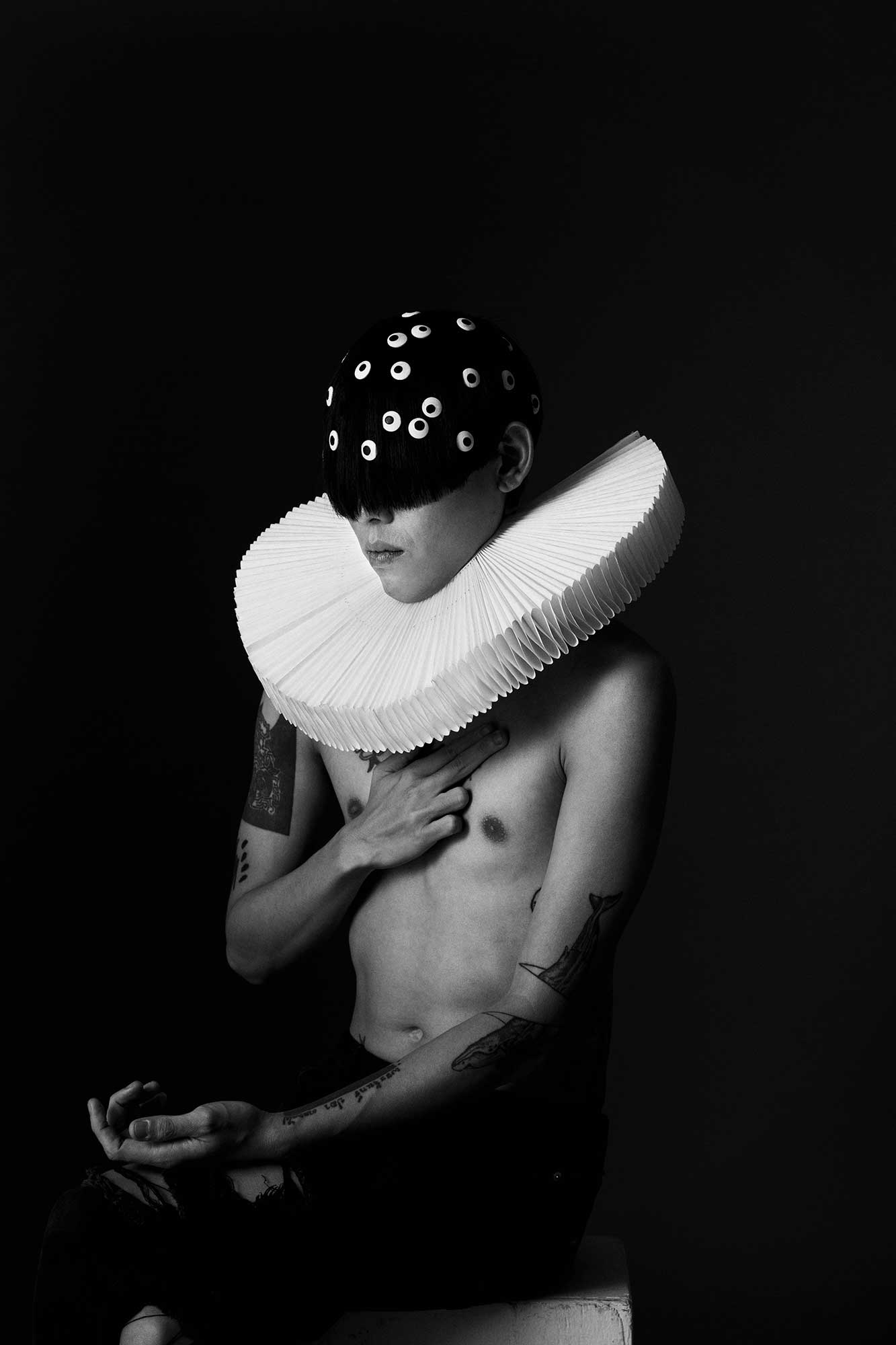
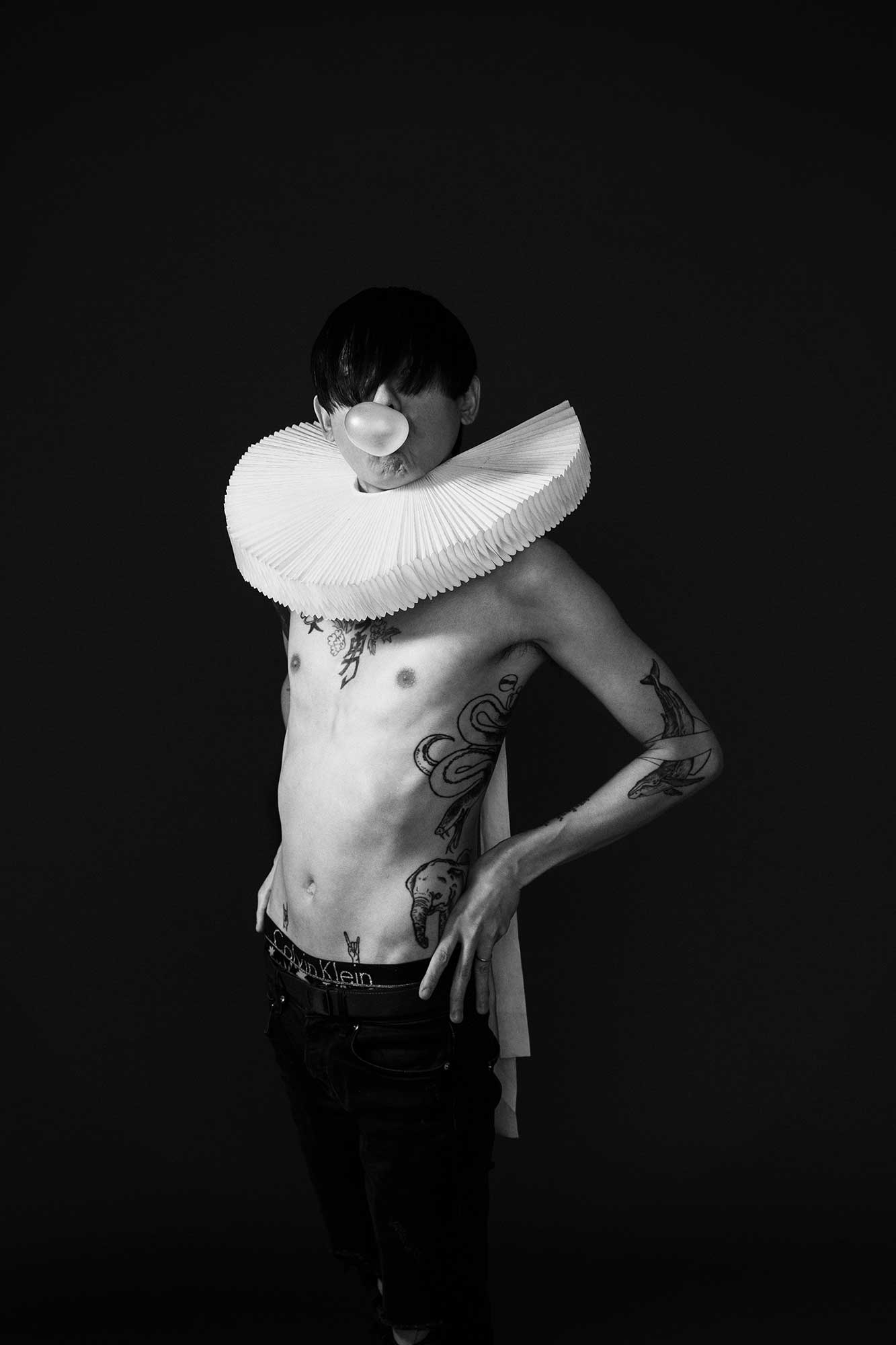
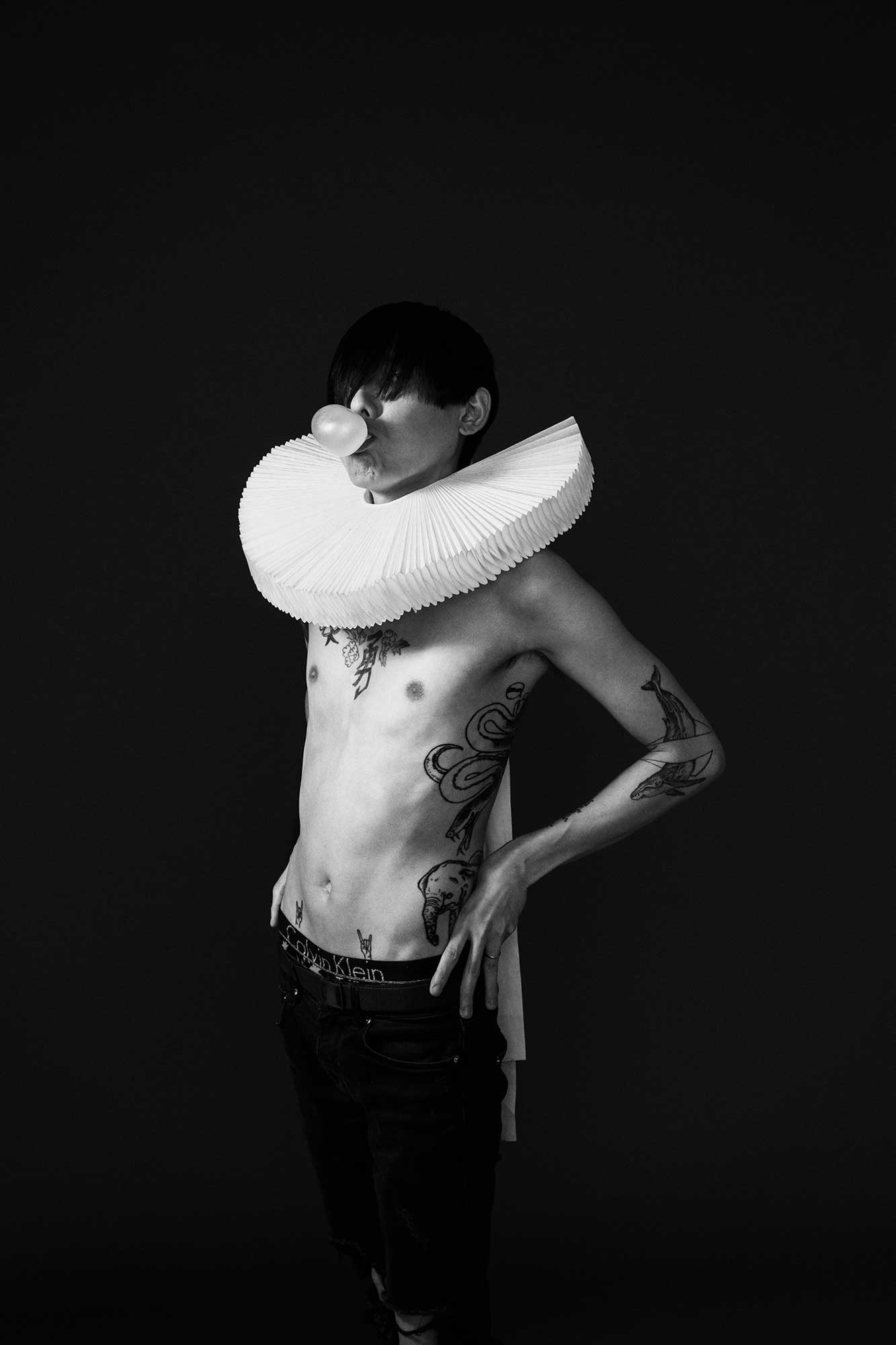



06在香港,每人都是怪人
「以前讀設計時,曾討論過甚麼是藝術。那就是當一件事情本身很有 Pattern,但你突然間打破了那個 Pattern。」
對阿水而言,「怪」就是「突出」或「Outstanding」 的東西。想像一下,你面前有五樽未開過的礦泉水,平排放在你面前,但其中一枝竟然沒有包裝紙,或是被喝光了,「那一下的突出,就令那枝水 Outstanding,那是一種怪,但也是藝術。」
阿水覺得自己其實也算是怪人,但問題是,阿水身邊很多人都覺得自己是怪人,「當所有人都是怪人的時候,那又有多怪呢?」阿水開始思考,也許每人都是怪人吧?「反正沒有人會覺得自己很正常或很普通。可能是物以類聚,我未試過遇上不怪的人。」
阿水自言自己喜歡很多「怪東西」,例如近年在歐美大熱的動畫《Rick and Morty》。不過,《Rick and Morty》本來的定位是怪和小眾,但當那麼多人喜歡《Rick and Morty》時,他還算是怪和小眾嗎?
「近幾年最喜歡的怪東西,我想應該是 BABYMETAL。」 BABYMETAL 是日本少女偶像團體兼重金屬樂團,她們開始了「Kawaii metal/Cute metal」這種新型音樂流派,既有可愛元素,同時融入了重金屬音樂。阿水的老婆,總是不明白為甚麼阿水這麼喜歡 BABYMETAL,他也為此嘗試過向老婆多次解釋,「她們把兩種看似差天共地的東西混合在一起,最後變成了一樣很特別的東西。」
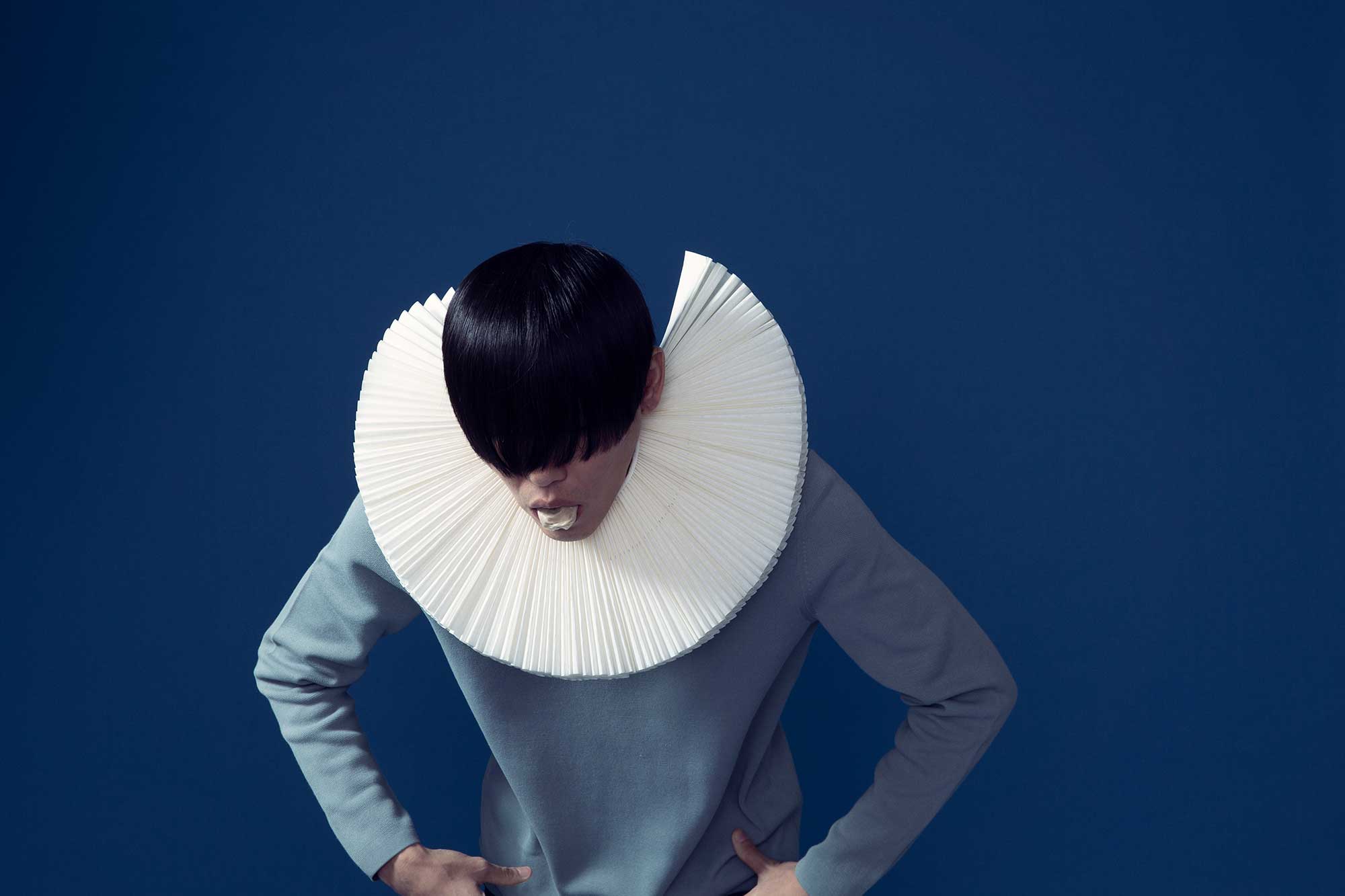
阿水提到一次搭地鐵的經歷,是他有史以以試過最怪的一次,「那時候,我身邊有位女士突然因為發羊吊(腦癇症發作)而跌倒在地上,我立即扶著她以免她頭著地。當時我雙手因為扶著她而沒空,於是我叫人幫忙按緊急掣,到站後,我本想拉她到月台坐下,再等工作人員來幫忙,但因為我一個人真的不夠力拉那位女士,眼見有個『四眼仔』站在一旁,我便叫他幫一把。怎知道,那四眼仔卻爆出一句:
「我不認識她的。」
那一刻,是阿水覺得在香港經歷過最怪的經歷。不知道是出於疑心,還是單純的冷漠 —— 香港那種人與人之間的隔閡、那種怪,令當時的阿水相當詫異,但一切,近來又似乎開始有某種轉變:
「相反看看現在的香港,大家又很願意互相幫助。」
香港人很怪。最怪的地方,可能就在於那種外冷內熱,但在真正危難關頭,也能團結一致、守望相助的那份可愛吧?
06In Hong Kong, everyone’s a weirdo
Jan’s strangest encounter happened on an MTR train.
“A woman near me had an epileptic seizure and fell to the ground,” he recalls, “I grabbed her immediately so that her head wouldn’t hit the floor. I asked someone to push the emergency button because my hands were full. When the train stopped, I tried to move her onto the platform but I struggled to do so, so I asked a guy in glasses for help and, surprisingly, he said:
“I don’t know that woman.”
This was the most bizarre moment he had in Hong Kong. Perhaps the man in glasses was being suspicious, perhaps he was just indifferent – the gulf between people in this small town nonetheless came as a great shock to him.
Gladly, it seems to be improving lately.
“Now people are much more willing to help each other out.”
Tough on the outside but soft on the inside, Hongkongers are peculiar in a sense that they can all come together amid crisis and help each other out.
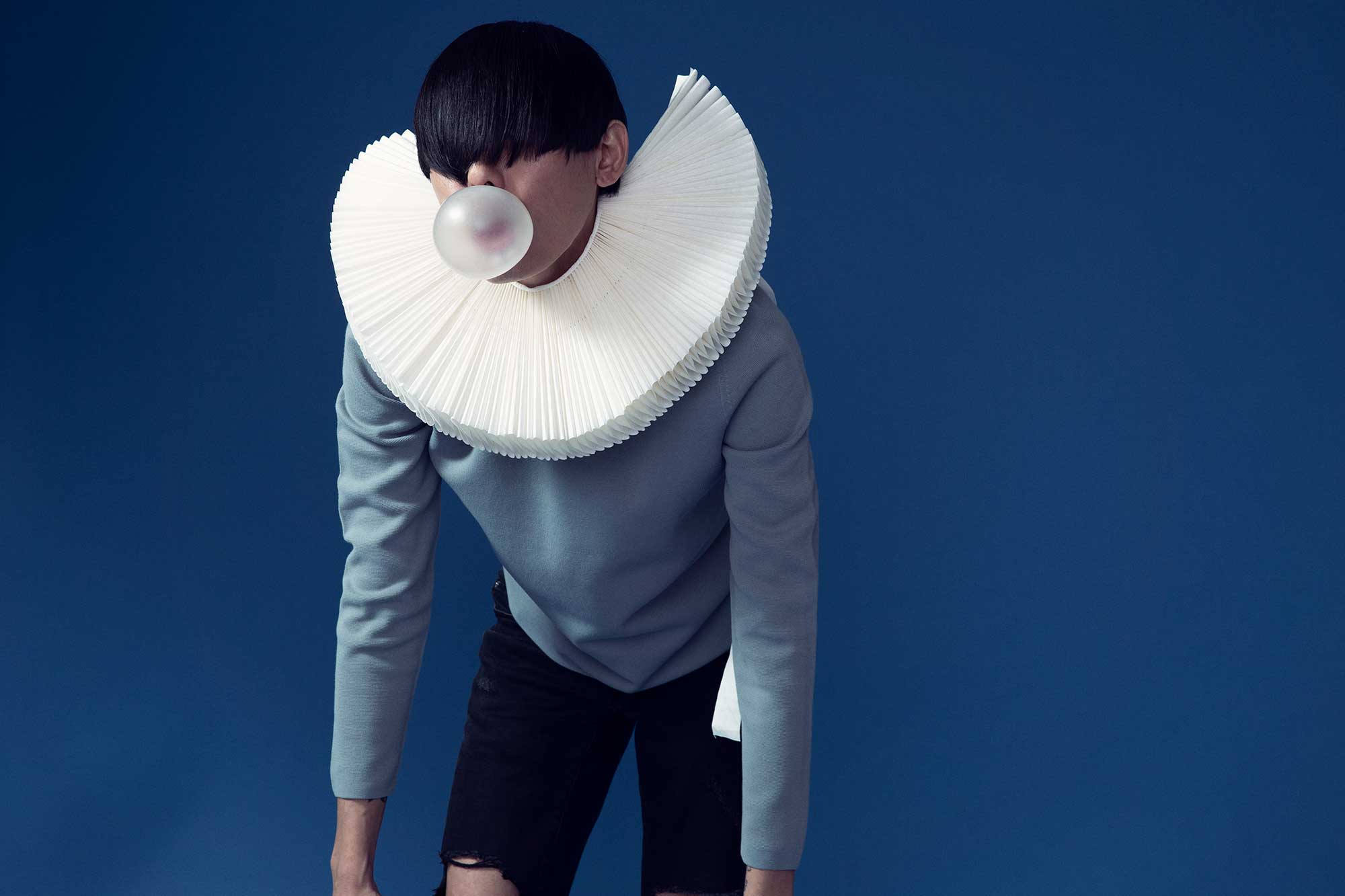
Jan regards himself as an eccentric; but the thing is, many people around him also think they are outlandish.
“How weird can you get when everyone is weird?”
Perhaps everybody is eccentric, he muses.
“Birds of a feather flock together. I’ve never met anyone who doesn’t appear weird to me. After all, not many people would regard themselves as normal or mundane.”
In an era defined by eccentricity, everyone wants to be special in some way – in terms of appearance, hobby or the way of thinking.
It’s therefore nothing wrong with being eccentric; on the contrary, steeping in conformity is what makes a real weirdo.
Text : Wong Yue Hang
Translator : Jennifer Chan
Art direction & Photography:Pazu Chan
Costume design :Maness Ko
Assistant:Bao
